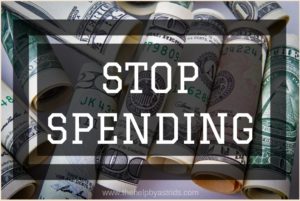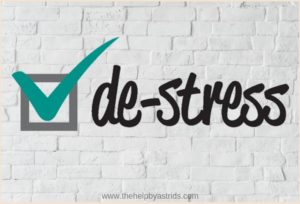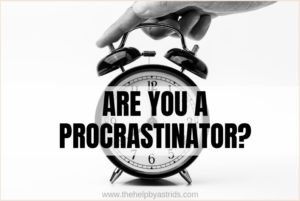 When we’re this close to the holidays, we have to be mindful of where we spend our money because every cent counts. Holidays are expensive events. We have to think about gifts, decorations, travel, food, and don’t forget incidental expenses that we incur along the way.
When we’re this close to the holidays, we have to be mindful of where we spend our money because every cent counts. Holidays are expensive events. We have to think about gifts, decorations, travel, food, and don’t forget incidental expenses that we incur along the way.
It’s no fun putting yourself on a financial diet and being a scrooge doesn’t make you a favorite person to be around either. So strike a careful balance about where you’re spending and which things are ok to spend a little on. Here are a few things that you can take a closer look at to see if you can stop needless spending on them.
Eating out
For people who are trying to save money, the first thing they cut off is their expensive designer coffee habit. Foregoing a daily trip to your favorite coffee shop can save you some major bucks at the end of the month.
Eating out is a good way to socialize at work or catch up with friends. Celebrating an occasion is also one of the main reasons why we eat out. There is nothing wrong with that, but when you’re eating out 5 times a week every day for lunch and then 5 times a week every day to hang out with friends for dinner, you’re leaking money. Try bringing your own lunch or making your own coffee and see how much you can save in a month.
Subscriptions and memberships
Got a gym membership that you signed up for in January but have visited exactly 4 times? Do you have subscriptions to 3 different streaming services? Are you paying for a diet coach app that you rarely use? Take a good hard look at the things you have signed up for that automatically renews each month. I’m pretty sure you’ll find a few apps or services, or memberships here and there that you rarely use. Get rid of those and see how much you can save in a month.
Prepared food
Ok, I’m guilty of this. I like buying cheese slices and pre-made burgers. I like salad kits and juice boxes. They’re easy, convenient…and a whole lot more expensive. But then I discovered that I could make a dozen burgers with the same amount of money it costs to buy 4 perfectly formed pre-made patties. Get a killer recipe off the internet and try making your own food. It’s so easy to take an extra step to slice, dice, and it takes very minimal effort but extra huge savings. Pre-cut food costs 50% more. So cut AND MAKE your own food and see how much you can save in a month.
Bottled water
Ok, first of all, this is no longer a saving issue but an environmental issue. Those bottles could liter the streets, clog the sewers and would somehow end up in the ocean. So, please, be responsible and stop buying bottled water. If you’re not confident about the water coming from your tap, invest in a Brita filter or some sort of filtration system for your tap. Let me get back to the topic. So ok, bottled water is an unnecessary expense. Stop buying bottled water and see how much you can save in a month.
What other things can you stop spending on to save money? Share them with us in the comments. Stay humble, hustle hard!
Written by Jaie O. The Help
 Taking care of your mental health is just as important as taking care of our physical health. We routinely take our vitamins, exercise religiously, and try to watch what we eat to make the best possible food choices in order to take care of our bodies. Shouldn’t we make the same meticulous effort to take care of our minds as well?
Taking care of your mental health is just as important as taking care of our physical health. We routinely take our vitamins, exercise religiously, and try to watch what we eat to make the best possible food choices in order to take care of our bodies. Shouldn’t we make the same meticulous effort to take care of our minds as well? A few days from now, streets are going to be flooded with monsters and characters demanding tribute, otherwise, they will wreak havoc on your yard. No, it’s not the apocalypse. It’s just a bunch of trick or treaters – kids dressed up as monsters or heroes shaking their candy bags or pumpkin pails in your face hoping to get some candy.
A few days from now, streets are going to be flooded with monsters and characters demanding tribute, otherwise, they will wreak havoc on your yard. No, it’s not the apocalypse. It’s just a bunch of trick or treaters – kids dressed up as monsters or heroes shaking their candy bags or pumpkin pails in your face hoping to get some candy. How long ago have you taken a break? And I don’t mean for lunch or coffee. I mean a mental break where you relax and decompress without your work laptop present or your phone on call. I get it, you’re busy, you’re important, you’re indispensable at work. People rely on you. You can’t stop now. You’re a trooper.
How long ago have you taken a break? And I don’t mean for lunch or coffee. I mean a mental break where you relax and decompress without your work laptop present or your phone on call. I get it, you’re busy, you’re important, you’re indispensable at work. People rely on you. You can’t stop now. You’re a trooper. Procrastination is the action of delaying or postponing something. It is a very bad habit. Or so we’ve been told. But we always hear stories about some of history’s most excellent work done by famous procrastinators. Among these legends are Hunter S. Thompson, Margaret Atwood, Herman Melville, Frank Lloyd Wright, and one college friend who has claimed to have done his thesis the night before it was due.
Procrastination is the action of delaying or postponing something. It is a very bad habit. Or so we’ve been told. But we always hear stories about some of history’s most excellent work done by famous procrastinators. Among these legends are Hunter S. Thompson, Margaret Atwood, Herman Melville, Frank Lloyd Wright, and one college friend who has claimed to have done his thesis the night before it was due.